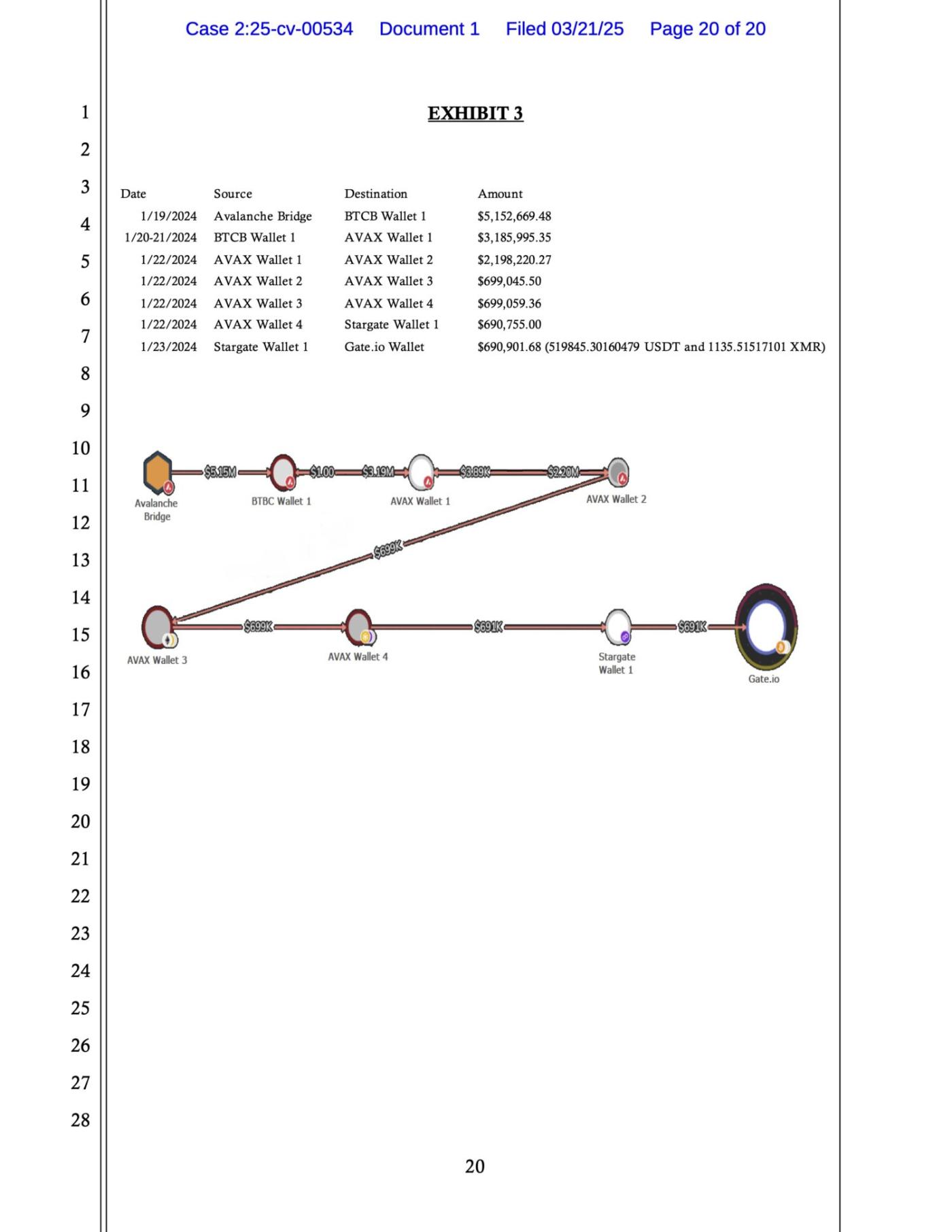※This article is automatically translated. For accurate content, please refer to the original text.
Summary:
- In 2023, Caesars Entertainment was hit by a $15 million ransomware attack by the Scattered Spider group.
- Chainalysis tools played a crucial role in helping the FBI track and freeze millions of dollars in ransom funds across multiple blockchains and protocols.
- This incident demonstrates the transparency of blockchain and how, with proper technology and ecosystem collaboration, ransom assets can be recovered months after an attack.
The 2023 ransomware attack on Caesars Entertainment became an international topic. The ransomware group "Scattered Spider" infiltrated Caesars' systems using advanced social engineering techniques. After breaching the system on August 18, they stole customer confidential data, demanded a $30 million ransom, and ultimately received $15 million in crypto assets.
The hackers believed they could hide these substantial proceeds from authorities by using crypto assets. However, the inherent transparency of crypto assets ultimately worked against them, as blockchain intelligence allowed investigators to track the flow of funds.
According to newly released court documents, the FBI used Chainalysis to track the ransom flow across multiple blockchains and protocols, freezing millions of dollars in crypto assets before they could be cashed out.
[The rest of the translation follows the same precise approach, maintaining the original structure and translating all non-technical text to English while preserving specific terms like Monero, BTC, etc.]The BTC ransom was initially transferred to two specific wallets (Extortion Wallet 1 and 2). Subsequently, the funds were transferred through a series of wallets. According to the document, these wallets appear to have been created solely for money laundering as they have no previous transaction history.
BTC was consolidated into one wallet and moved to the Avalanche Bridge, where it was exchanged for wrapped tokens on the Avalanche blockchain.

These tokens were laundered through multiple wallets via Avalanche and Stargate protocols to further obscure their origin. When the FBI intervened, the funds were being transferred to a Gate.io wallet.
The investigation tool "Reactor" helped investigators reveal money laundering patterns, link crypto asset addresses to real-world entities, and build evidence necessary for asset seizure.
Changes in Ransomware Trends
The attack on Caesars was not an isolated incident. Scattered Spider also targeted MGM Resorts around the same time as part of an organized extortion campaign. However, since then, the ransomware landscape has dramatically changed.
In 2024, global law enforcement crackdowns significantly disrupted major ransomware operations. LockBit was dismantled, BlackCat conducted an exit scam, and new groups proliferated to fill the void. These disruptions led to a 35% decrease in total ransomware payments, dropping from $1.25 billion in 2023 to approximately $813.6 million in 2024. Notably, less than half of ransomware incidents resulted in victim payments, highlighting increased victim resistance and improved countermeasures.

The Caesars incident means more than just fund recovery. It vividly illustrates how blockchain intelligence impacts modern cybercrime enforcement. With each successful tracking and seizure, methods are refined, precedents are established, confirming blockchain technology's role in combating rather than supporting criminals.
Chainalysis Support for Asset Seizure
To date, Chainalysis has helped partners worldwide, including exchanges, law enforcement, corporations, and government agencies, seize and freeze over $12.6 billion in crypto assets. The success of recovery builds confidence in fighting financial crime and recovering victim funds in an increasingly crypto-driven world. This case demonstrates how blockchain transparency, supported by appropriate tools and partnerships, can lead to substantial recovery even after ransom payment. In many ways, this is a turning point. There's no longer a guarantee that threat actors will go unpunished after ransom payment. The ability to intervene post-payment and recover funds before cashout makes blockchain intelligence a powerful game-changer in ransomware response.
Chainalysis Crypto Asset Seizure Certification
Learn how to seize crypto assets with the latest investigative tools and techniques
Get certified
This website contains links to third-party sites that are not under the control of Chainalysis, Inc. or its affiliates (collectively "Chainalysis"). Access to such information does not imply association with, endorsement of, approval of, or recommendation by Chainalysis of the site or its operators, and Chainalysis is not responsible for the products, services, or other content hosted therein.
This material is for informational purposes only, and is not intended to provide legal, tax, financial, or investment advice. Recipients should consult their own advisors before making these types of decisions. Chainalysis has no responsibility or liability for any decision made or any other acts or omissions in connection with Recipient's use of this material.
Chainalysis does not guarantee or warrant the accuracy, completeness, timeliness, suitability or validity of the information in this report and will not be responsible for any claim attributable to errors, omissions, or other inaccuracies of any part of such material.
The post Chainalysis Supports FBI in Recovering Caesars Entertainment Ransom appeared first on Chainalysis.








